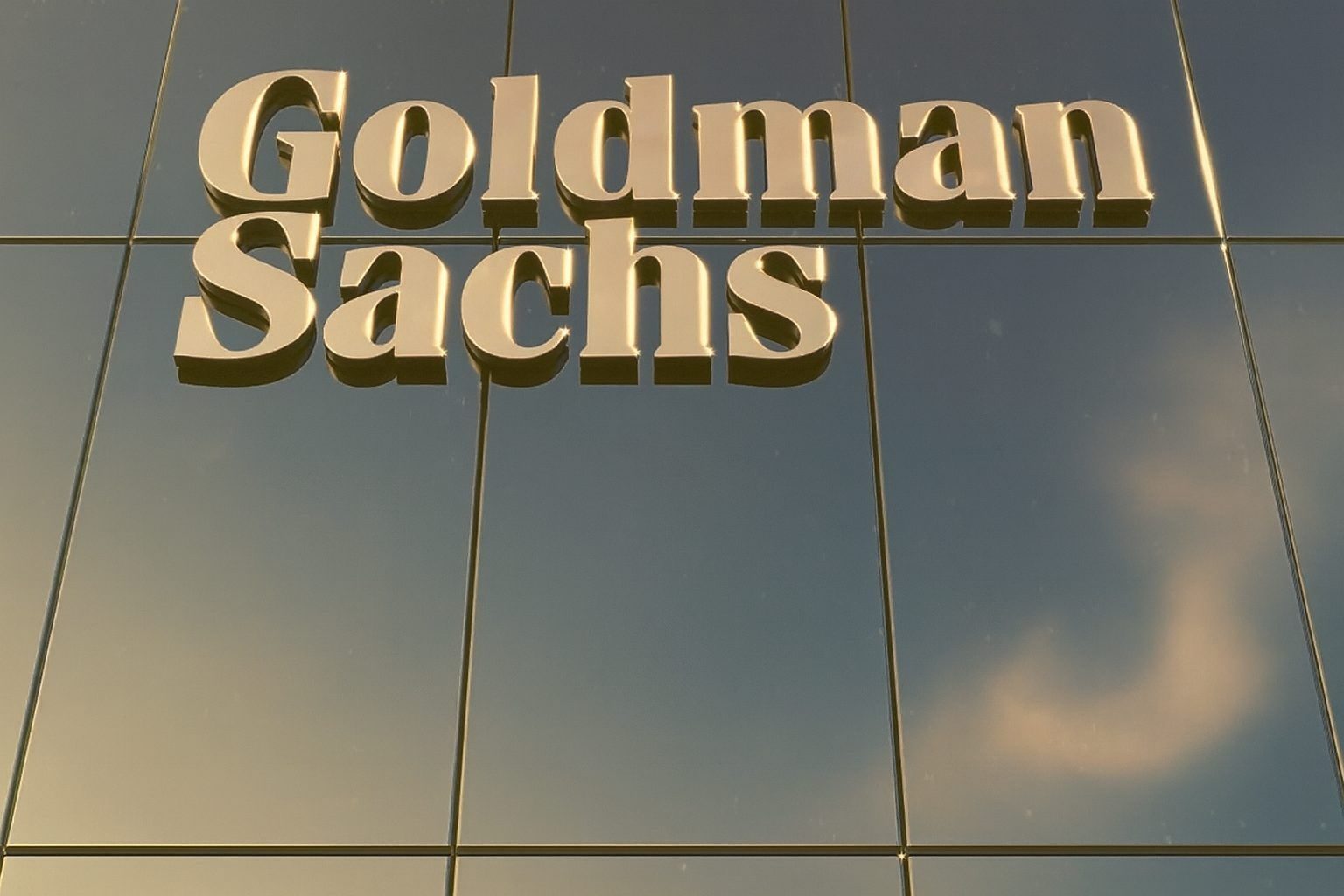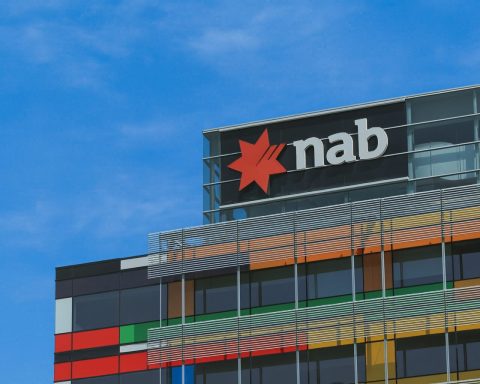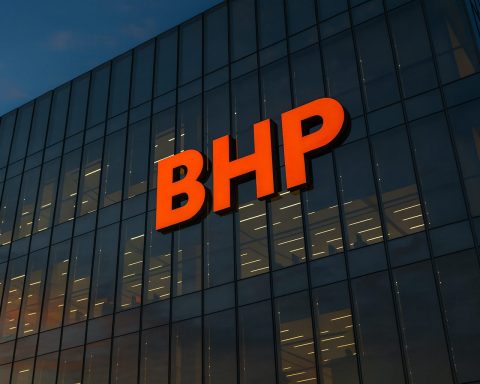Goldman Sachs Group, Inc. (NYSE: GS) shares are trading higher on Wednesday, 26 November 2025, as investors digest a wave of fresh research, regulatory filings and institutional ownership disclosures that reinforce the bank’s deal‑making and trading strengths – even as Wall Street’s official view on the stock remains a cautious “Hold.” [1]
Goldman Sachs stock price today: trading near the top of its range
As of early afternoon on 26 November, Goldman Sachs stock is trading around $815 per share, up roughly 1.5% on the day and outpacing the broader U.S. equity market. Real‑time feeds from major market data providers show quotes in the $813–$816 range during the New York session, with intraday highs just under $820. [2]
- Intraday range (today): roughly $802 to $820 per share. [3]
- Previous close (25 November 2025): about $802.32 per share. [4]
- Today’s move: a gain of around 1.5–1.6%, putting GS well into positive territory for the session. [5]
From a longer‑term perspective, the stock has:
- Gained about 45% year‑to‑date in 2025, significantly ahead of the S&P 500. [6]
- Risen roughly 35% over the past 12 months, within a 52‑week range of about $439 to $841. [7]
- Traded today on volume slightly below its average daily volume of around 745,000 shares. [8]
With the stock now hovering not far below its 52‑week high, valuation and future earnings momentum are front‑of‑mind for investors deciding whether GS can keep climbing from here. [9]
Why Goldman Sachs (GS) is up today
MarketBeat’s live tracker notes that Goldman Sachs is trading higher today on a cluster of bullish research headlines and macro tailwinds, especially around M&A momentum, fixed‑income trading and the bank’s influence in AI‑linked equity research. [10]
Key drivers behind today’s move include:
1. Strong M&A and capital markets story
A new analysis from Zacks, widely syndicated via Finviz, compares Goldman Sachs vs. Morgan Stanley and highlights Goldman’s renewed focus on its core strengths in investment banking and trading. [11]
- Goldman has spent the past few years exiting consumer banking, including selling:
- Its Polish asset management unit (TFI) to ING Bank Śląski,
- The GM credit-card portfolio in 2025,
- The GreenSky installment‑lending business (2024),
- Its Personal Financial Management unit and the bulk of Marcus loans (2023). [12]
- In the first nine months of 2025, investment‑banking (IB) fees reached about $6.8 billion, up 19% year‑over‑year, with Goldman maintaining a leading share in completed and announced M&A deals. [13]
That article argues that a surge in global dealmaking could make 2025 one of Goldman’s strongest M&A years in decades, reinforcing the narrative that the firm is now a more focused, higher‑quality version of its traditional investment‑banking powerhouse self. [14]
2. Fixed‑income trading tailwinds
A separate Zacks piece, “Big Banks Poised to Capitalize on Fixed‑Income Trading Surge,” flags Goldman as one of the big winners from a powerful rebound in rates and macro trading. [15]
- Diverging rate policies across major central banks, rising fiscal deficits and a steeper yield curve are driving higher volatility and volumes in fixed‑income and derivatives markets. [16]
- Goldman’s FICC (fixed income, currencies and commodities) revenue is up about 8% year‑over‑year for the first nine months of 2025, suggesting solid underlying trading momentum. [17]
Together, stronger advisory pipelines and improving trading conditions create a backdrop where investors can credibly model double‑digit earnings growth for the next two years – even if economists still debate the macro outlook. [18]
3. AI halo effect and research influence
Goldman’s research franchise is also front‑and‑center in today’s newsflow:
- The bank raised its price target on Broadcom (AVGO) to $435 from $380, implying roughly 15% upside and citing expectations that Broadcom’s AI‑related revenue could more than double year‑over‑year in fiscal 2026. [19]
- A separate feature from 24/7 Wall St. spotlights a Goldman Sachs AI‑driven screen that selects dividend stocks benefiting from productivity gains, highlighting five “strong buys” in the Russell 1000 index. [20]
MarketBeat’s GS page explicitly notes that Goldman’s active role in AI‑themed stock calls and custom screens is boosting perceived thought‑leadership and client engagement, contributing to today’s positive sentiment in the shares. [21]
4. Macro notes and hedge‑fund positioning
A widely circulated Goldman Sachs client note on UK equities reveals that hedge funds have pushed short positions in domestically focused UK companies to their highest levels since 2023, as investors brace for tax increases in the upcoming UK budget. [22]
While the note is about UK stocks, it underscores Goldman’s central role in macro strategy and hedge‑fund flow analysis, another reason the firm’s brand carries weight whenever macro volatility rises.
Fresh analyst views: consensus “Hold” and a full valuation
Despite today’s positive price action, the Street’s overarching stance on GS is still neutral.
A detailed MarketBeat review released today shows:
- 21 analysts currently cover Goldman Sachs.
- The consensus rating is “Hold”, with:
- 1 Sell,
- 16 Hold,
- 4 Buy ratings.
- The average 12‑month price target is around $786, below where the stock is trading today in the mid‑$800s. [23]
In other words, Goldman’s share price has run ahead of the average target, reflecting strong recent performance and optimism on M&A and trading – but also leaving less obvious upside according to the current analyst framework. [24]
Zacks’ comparative analysis adds nuance:
- Goldman trades at a trailing P/E of about 14.8x, versus 16.1x for Morgan Stanley and a higher average valuation on a price‑to‑tangible‑book basis for the broader investment‑banking industry. [25]
- Over the past three months, GS is up 7.6%, but it has underperformed Morgan Stanley’s 11.4% gain over the same period. [26]
- Zacks assigns Goldman a Rank #3 (Hold) vs. Rank #1 (Strong Buy) for Morgan Stanley, arguing that MS currently offers stronger upside thanks to its more diversified wealth and asset‑management engine. [27]
For today’s move, that mix of solid fundamentals but “full-ish” valuation helps explain why GS is rising, but not exploding higher, even with supportive research headlines.
Earnings beat and dividend support the bull case
Today’s analyst commentary leans heavily on Goldman’s latest quarterly results, which were materially stronger than expectations:
- Q3 EPS: about $12.25 vs. $10.27 expected, a sizeable earnings beat. [28]
- Revenue: roughly $15.18 billion vs. $13.68 billion consensus, up around 19.5% year‑over‑year. [29]
- Profitability: net margin near 13% and return on equity (ROE) close to 15%. [30]
Goldman has also stepped up shareholder returns:
- The quarterly common dividend is now $4.00 per share (annualized $16), implying a dividend yield of roughly 2% at current prices. [31]
- The dividend has been raised four times in the past five years, with an annualized growth rate above 20%, following the bank’s clean passage of the 2025 Federal Reserve stress tests. [32]
Those data points feed into today’s narrative that GS offers solid income plus cyclical upside to dealmaking and trading, albeit with more volatility than a pure wealth‑management franchise.
Structured‑note issuance: steady flow of fee‑generating products
Another big theme in today’s filings: Goldman’s structured‑products machine is running at full speed.
On 26 November, GS Finance Corp., guaranteed by The Goldman Sachs Group, Inc., filed multiple Form 424B2 prospectus supplements for new equity‑linked notes, including: [33]
- S&P 500® index‑linked notes due 2029 with payouts tied to index performance between late 2025 and 2029.
- Leveraged buffered notes linked to the S&P 500® Futures Excess Return Index, due 2028, which offer enhanced upside within a buffer zone but no regular interest payments.
- Index‑linked notes due 2030 based on the lesser performer of the Dow Jones Industrial Average and the S&P 500, with a 20% downside buffer and a capped maximum return.
- Callable buffered monthly Russell 2000® range‑accrual notes due 2030, paying interest only when the small‑cap index stays above a specified barrier and allowing Goldman to redeem the notes early.
These products are typically sold to yield‑seeking and structured‑product investors and:
- Generate non‑trivial fee income for Goldman’s Global Banking & Markets division.
- Slightly expand the firm’s contingent exposure to equity indices, though the notes are generally hedged.
Today’s batch of filings underscores Goldman’s role as a leading issuer in the structured‑note market, an important – if sometimes overlooked – driver of recurring revenue.
Institutional flows, insider activity and regulatory disclosures
The news flow today also includes a flurry of 13F‑style ownership updates and regulatory filings tied to GS: [34]
- RPG Investment Advisory LLC cut its position in Goldman Sachs by about 49% in the second quarter, selling over 16,000 shares and retaining ~16,700 shares; GS still represents around 1.5% of its portfolio. [35]
- Several other wealth managers – including SlateStone Wealth, Laurel Wealth Advisors, Quadcap Wealth Management, Global Retirement Partners, Elo Mutual Pension Insurance and Cornerstone Capital – reported new or increased stakes in GS, while Boston Partners and others trimmed their holdings. Overall, the flows look more like normal portfolio rebalancing than a clear directional call. [36]
- A small sale by Rep. Lisa C. McClain of GS shares was reported in congressional disclosures; MarketBeat classifies this as a minor technical negative with little impact on fundamentals. [37]
Separately, Goldman Sachs Bank Europe SE disclosed trading in Permanent TSB Group Holdings under Irish takeover‑panel rules, confirming that it held about 51,915 shares (less than 0.01% of the company) as of 25 November and no short position in the Irish lender. [38]
All of this reinforces the picture of Goldman as a heavily owned, actively traded blue‑chip financial, where modest position changes and regulatory filings are part of the daily background noise.
Big picture: what today’s action means for GS investors
Putting the day’s moves and headlines together, a few themes stand out:
- Operational momentum is real.
- M&A and capital‑markets activity are rebounding, with Goldman capturing outsized share.
- Trading revenues – especially in fixed income – are benefiting from a more volatile and steeper yield‑curve environment. [39]
- The franchise is more focused than it was a few years ago.
- The strategic exit from consumer banking (Marcus, GreenSky, PFM) reduces distraction and capital drag, centering the firm on its historic strengths: advisory, trading and asset & wealth management. [40]
- Valuation is no longer cheap.
- With the stock up ~45% year‑to‑date and trading near the top of its 52‑week range, GS now sits above the average analyst price target and commands a P/E that, while slightly below peers, reflects a lot of good news. [41]
- Street sentiment is constructive but not euphoric.
- Consensus rating: “Hold”, not “Strong Buy.”
- Zacks likewise rates GS a Hold, highlighting downward tweaks to earnings estimates even as it praises the M&A and trading setup. [42]
- Shareholder returns provide a cushion.
- A nearly 2% dividend yield with a history of robust growth, combined with buybacks, offers some support if deal activity or trading slows from current levels. [43]
For now, today’s rally in Goldman Sachs stock looks like a continuation of a broader 2025 rerating: investors are rewarding the firm’s sharper strategic focus, strong quarterly execution and leadership in high‑fee activities like M&A advisory, macro trading and AI‑driven research – while still recognizing that, at current prices, GS is more “core holding” than classic deep‑value play.
Key takeaways for readers
- Today (26 November 2025), GS is trading around $815, up roughly 1.5% on the day and close to its 52‑week high. [44]
- News catalysts include: bullish commentary on M&A and trading, upbeat Zacks/Finviz research, AI‑themed stock calls, and a fresh batch of structured‑note offerings. [45]
- Fundamentals remain strong, with a recent earnings beat and rising dividend, but analysts broadly see the shares as fairly valued after a big year‑to‑date run. [46]
- Institutional flows are active but mixed, with some wealth managers adding GS and others trimming positions, consistent with a widely held, large‑cap financial stock. [47]
References
1. seekingalpha.com, 2. seekingalpha.com, 3. robinhood.com, 4. finance.yahoo.com, 5. seekingalpha.com, 6. finance.yahoo.com, 7. www.investing.com, 8. www.investing.com, 9. www.investing.com, 10. www.marketbeat.com, 11. finviz.com, 12. finviz.com, 13. finviz.com, 14. finviz.com, 15. finviz.com, 16. finviz.com, 17. finviz.com, 18. finviz.com, 19. stocktwits.com, 20. 247wallst.com, 21. www.marketbeat.com, 22. www.reuters.com, 23. www.marketbeat.com, 24. www.marketbeat.com, 25. finviz.com, 26. finviz.com, 27. finviz.com, 28. www.marketbeat.com, 29. www.marketbeat.com, 30. www.marketbeat.com, 31. www.marketbeat.com, 32. finviz.com, 33. www.stocktitan.net, 34. www.marketbeat.com, 35. www.marketbeat.com, 36. www.marketbeat.com, 37. www.marketbeat.com, 38. www.investing.com, 39. finviz.com, 40. finviz.com, 41. finance.yahoo.com, 42. www.marketbeat.com, 43. www.marketbeat.com, 44. seekingalpha.com, 45. finviz.com, 46. www.marketbeat.com, 47. www.marketbeat.com








